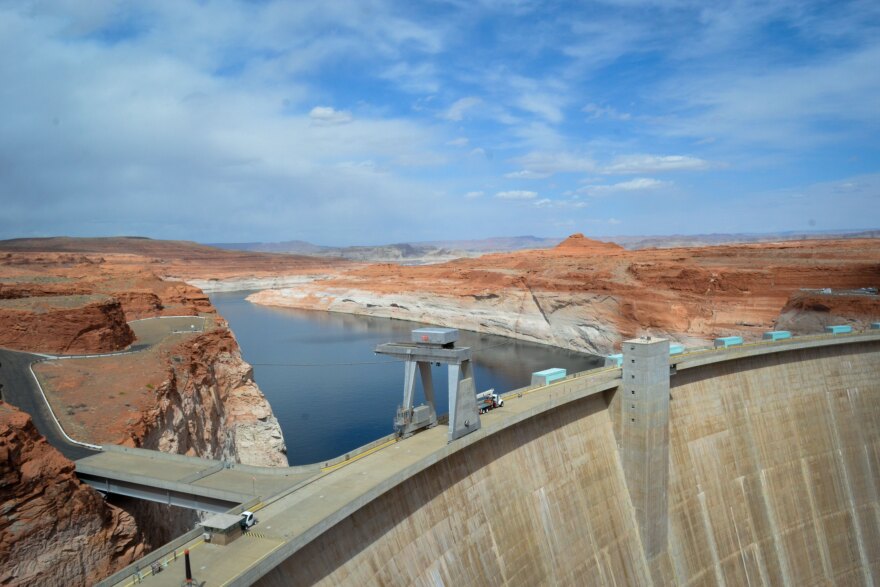Environmental groups are calling on the federal government to fix the plumbing at Glen Canyon Dam. They say as Lake Powell water levels continue to drop, it’s not just hydropower people need to be worried about, but also water delivery to Lower Basin states.
An analysis from Utah Rivers Council, Glen Canyon Institute and Great Basin Water Network finds that if water levels at Lake Powell drop about another 100 feet, Lower Basin states may not be able to get their full allocation of Colorado River water.
Currently, the reservoir is at 3,536 feet.
Zach Frankel, executive director of Utah Rivers Council, said important, yet antiquated, mechanisms on the dam are too high up and could soon be useless.
“The water supply in the Colorado [River] for some 30 million people downstream is dependent on the Upper Basin using those river outlet works to deliver this critical water supply to this population,” he said.
The groups want Congress to give emergency funding to the Bureau of Reclamation to study the problem.
The report states penstocks, or steel tubes that carry water to the turbine, are at an elevation of 3,470 feet. They’re how water is often delivered to Lower Basin states. About 100 feet below that are smaller tubes called river outlet works, which are the lowest water delivery mechanism for the dam, according to the report. There’s a limited amount of water that can be released from these outlets, the report stated, using information from a 2016 paper from the Center for Colorado River Studies.
The groups assert that if water drops below the penstocks and near the outlet works, the Colorado River Compact requirement to deliver 7.5 million acre-feet of water annually to Arizona, Nevada, California and Mexico will not be possible.

This all comes as the Bureau of Reclamation has called on the Colorado River basin states to cut an additional 2 to 4 million acre-feet of water. The groups called this ask by the federal government “seismic.”
“The urgency associated with the Bureau's call to cut water across seven states stems from this plumbing problem,” Frankel said.
The groups suggest expanding river outlets or adding bypass pipes — both would increase how much water can be released at low water elevations. Eric Balken, the executive director of the Glen Canyon Institute, said people need to seriously consider alternative ways to manage the dam.
“Climate science has been very clear … that the river hydrology is most likely going to get worse,” he said. “We need to have every tool available to address this crisis and if the problems at Glen Canyon Dam aren't addressed soon, it's going to be bad for all stakeholders.”


